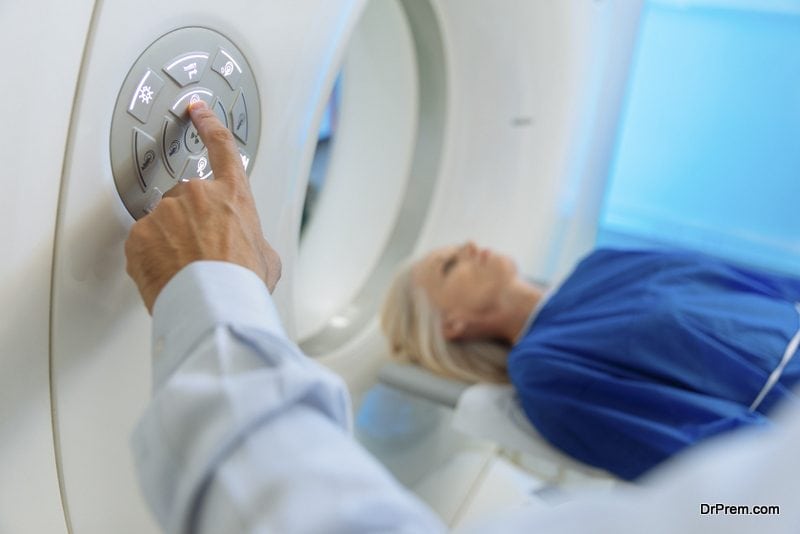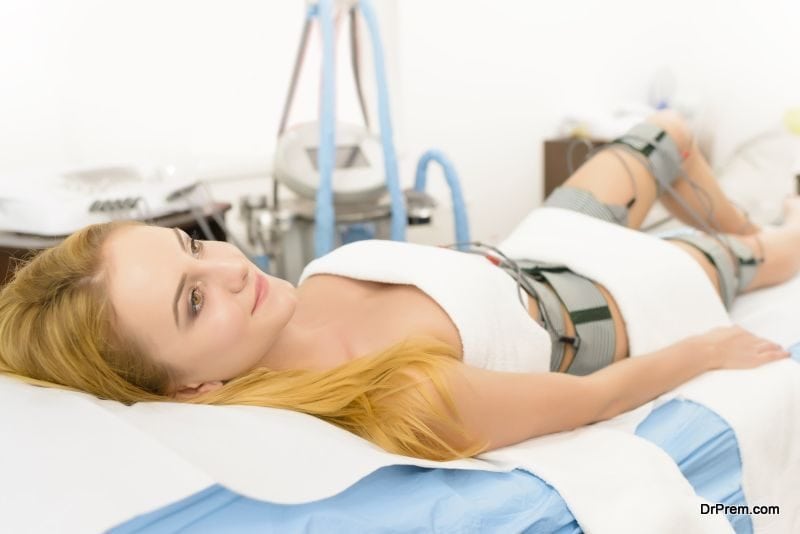Tomophobia is the fear of surgery or surgical operations. No matter the severity of a person’s condition, some individuals simply can’t push past their fear of surgery to receive the treatment and help they need. But not all hope is lost. There are constant advances and improvements in the medical field that allow patients to find relief from their common ailments without going under the knife or anesthesia. Read on to discover some of the most common and effective non-surgical forms of treatment and diagnosis for prevalent, and potentially debilitating, conditions.
Types of Non-Surgical Procedures

There are numerous types of non-surgical procedures that are used to diagnose, monitor, and treat specific conditions. For people who fear surgery, these types of procedures are ideal because most are non-invasive, do not involve any type of cutting, and rarely require anesthesia. But it’s important to note that many of these procedures are the first steps in diagnosing a medical illness or condition and then choosing an action plan. Once the action plan is adopted, it may require surgery. Many of these non-surgical procedures are performed in surgery centers or right in the doctor’s office, which helps patients avoid a trip to the hospital. Some of these procedures include:
- Diagnostic procedures (X-rays, MRI, Cat Scan, other tests)
- Propaedeutic procedures (physical examinations and evaluations)
- Therapeutic procedures (physical therapy, radiation, treatments used to repair injury or other malfunctions)
- Rehabilitative procedures (treatments used to improve or maintain an individual’s condition)
Different non-surgical procedures are used to help identify and treat specific conditions. Often, your primary doctor will evaluate your condition before referring you to a specialist or sending you to the appropriate facility where these tests are performed. Read on to find out more about the different conditions that these specific, non-surgical procedures may be used to treat.
Diagnostic Procedures

Diagnostic procedures are usually the first place your doctor will start in terms of identifying your medical condition and choosing a treatment plan. That’s because diagnostic tests are used to do just that – diagnose specific conditions. These types of tests also help determine the severity of your condition. Some diagnostic procedures are much less invasive than others. Common tests include blood and urine and those mentioned above like x-rays, ultrasounds, an MRI (magnetic resonance imaging), or CT (computed tomography). These tests can help diagnose the following conditions:
- Identifying broken or fractured bones (x-ray)
- Evaluating the condition of someone’s joints (x-ray)
- Providing information about internal organs such as the liver, gallbladder, pancreas, and kidneys (ultrasound)
- Measure the flow of blood through the arteries and identify blockages (ultrasound)
- Scan the body for tumors or cancer (CT)
Once these non-surgical procedures are performed, doctors have a better understanding of what they’re dealing with and how best to treat it.
There are other diagnostic tests that do include anesthesia but do not constitute surgery or any type of surgical procedures or cutting. These include an endoscopy, colonoscopy, and angiograms. An endoscopy is most commonly used to give doctor’s a clearer view of the esophagus and stomach. During an endoscopy, patients are mildly sedated.
The test can determine if there is any damage to the areas in question or tumors present. Doctors can also perform any necessary biopsies during this time. A colonoscopy is similar but involves a thin camera traveling through a person’s colon and into their intestines. Patients are mildly sedated and must perform a colon cleanse prior to the procedure. An angiogram is a special type of x-ray where contrast dye is injected into a person’s veins to help doctors better define the blood vessels. Angiograms are used to help diagnose heart, lung, and certain brain conditions.
Propaedeutic Procedures

These are probably the least invasive of procedures and one that most people have undergone at one time or another. Propaedeutic procedures are best known as physical exams and are performed by your primary doctor. If you’re feeling sick or are concerned that something more serious is going on, you’ll start by visiting your primary doctor for a full physical.
After this, your doctor can refer you to a specialist or send you for further testing. Physicals, whether done for diagnostic purposes or merely as part of an annual exam, are relatively routine. If you’re seeing your doctor for a specific reason, they will likely focus on the area of your body or the symptoms you’re experiencing. Common checks your doctor will perform during a propaedeutic procedures are:
- Using a stethoscope to listen to your heart and lungs
- Check your ears, nose, and throat
- Check reflexes by tapping on specific joints
- Check internal organs by pushing on the stomach (looking for swelling, abnormalities, lumps, or tenderness)
- Take your blood pressure, pulse, and temperature
- Ask questions about your condition and examine your overall appearance and demeanor
All of these procedure are commonplace during a physical exam. If you’re experiencing specific problems such as chest pains, back or neck pain, or difficulty breathing, your doctor may instantly refer you to a specialist. If pain is your issue, there are numerous treatment plans available that don’t require surgery or medication. If you’re interested in these alternative methods you can view here.
Therapy and Rehabilitation

Both therapy and rehabilitation are used to help restore mobility and function to patients who have suffered injury or who’s faculties are compromised due to injury, disorder, or disease. These non-surgical treatment options are often used to treat physical conditions but some forms are viable for patients with extensive, internal issues like cancer.
Therapy and rehabilitation both address a person’s physical well-being and ability to function properly. Non-surgical forms of therapy include physical therapy, radiation, chemotherapy, and other medications. Rehabilitation helps address a wide range of conditions including speech, diet, vision, and mobility. Sometimes, therapy and rehab are the steps taken following surgery, whereas other times, they are used in an attempt to avoid surgery.
Holistic and Natural Approaches to Medicine

For some people, it’s not the fear of surgery or anesthesia that prevents them from going under the knife but instead a belief in a more holistic and natural approach. There are countless ways to treat common conditions outside the parameters of modern medicine. When it comes to taking alternative approaches to medicine, it’s a personal decision and one that sparks some controversy.
Doctors and other medical professionals may not agree with these approaches, while those who strongly believe in alternative medicine see a natural approach as the only option for them. So what types of holistic, non-surgical treatment options are available and what conditions can they treat?
Areas of holistic care

Holistic medicine focuses on treating the entire individual as a whole. This means taking into consideration not only the physical ailments but also psychological, social, and emotional. It’s about treating the entire person and placing importance on natural healing. Those who believe in holistic medicine also believe that achieving a healthy balance in all aspects of life will help prevent diseases and promote overall, optimum health. Although holistic doctors avoid prescribing medications when possible, they are not totally opposed to doing so but only after exhausting all other avenues and alternatives.
Before prescribing medications, holistic doctors will evaluate the person’s entire lifestyle to help identify underlying factors that could be causing or aggravating a specific condition. For example, if someone is suffering from chronic headaches, a doctor will evaluate the person’s diet, work and sleep habits, stress levels, relationships, and all other external factors that may be adding to their condition. A holistic doctor will then try to eliminate triggers and suggest changes in the person’s lifestyle before suggesting medication.
The basic principles that define the holistic approach to medicine include:
- The patient is a person, not a disease
- Healing requires a team effort of doctors, the patient, and those closest to the patient
- All people possess their own, internal healing powers
- Treatment is about identifying the source of the ailment not simply treating the symptoms
There are also some common methods that holistic doctors practice to help avoid both medication and surgery. One of the first places that holistic doctors start is with a lifestyle change for the patient. Elements of the person’s lifestyle that may require change include level of physical activity, stress levels, diet, sleep patterns, negativity, and workload.
If the doctor believes making adjustments to these areas of the person’s life will have a positive effect on their physical condition, they will recommend specific changes. Holistic doctors also promote and recommend non-surgical procedures including chiropractic care, acupuncture, naturopathy, and massage therapy. These treatments can help relieve pain in a non-invasive way, which is perfect for those individuals who don’t believe in surgery. However, some holistic doctors will revert to using medication or minor surgical procedures if none of the above mentioned efforts work.
There’s always an alternative way

Don’t be fooled into thinking that surgery is your only option for treating a chronic or new medical condition. With patience, research, and an open mind, you can find alternative ways to diagnose and treat your illness or ailment. Of course, some conditions require surgery, no matter how many alternative approaches you take. But before opting for surgery, investigate what your other options are. If you’re unsure where to start, consult your doctor.
Article Submitted By Community Writer




